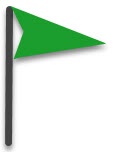Instructions: Technology makes vast amounts of information (and misinformation) readily available. The challenge is navigating this sea of information. Our goal for your general science education is to develop your scientific literacy. A critical skill you must develop is the ability to find reputable sources of academically and scientifically credible information. There are many sources of high-quality scientific information on the open web; you just need to learn how to spot them by identifying any “green” or “red” flags.
For this week’s Initial Post:
- Using your selected topic from your Week 2 Mini-Presentation assignment, select only ONE article from a source of anatomy & physiology information from the open web or the Trefry Library.
- Use the name of your article and its source as the title of your initial post. (You cannot use a source that one of your classmates has already used or you will not receive credit.) (e.g., “Osteoarthritis – CDC”)
- Evaluate your selected source and write it in APA reference list format:
1. Evaluate the source by explaining why it is or is not an academically and scientifically credible source of information.
A. Provide a minimum of three pieces of evidence to support your thoughts and state if they are green or red flag examples.
Some evidence to consider is the credibility of the author as a subject matter expert, the quality of the reference sources included in the article or lack thereof, the credibility of the publisher or website, etc. Review the Source Evaluation Cheat Sheet.
![]() Green-Flag evidence example:
Green-Flag evidence example:
- Author is a subject-matter expert (e.g., “Dr. Mary Smith holds an M.D. in orthopedics.”)
![]() Red-Flag evidence example:
Red-Flag evidence example:
- Author is not a subject-matter expert and does not provide academically and scientifically credible reference sources. (e.g., “John Jones is a freelance writer with a journalism degree and did not include any credible reference sources.”)
B. Based on the evidence you have provided, state if you feel this source is an overall credible source.
Examples:
- “All three pieces of evidence I found were green flags; therefore, I feel this is a credible source overall.”
- “All three pieces of evidence I found were red flags; therefore, I feel this is not a credible source overall.”
- “The evidence I found was a mix of red and green flags. Because Wikipedia was one of the sources noted in the article, I believe this is not a credible source overall.”
2. Provide a reference for your source in APA reference format (version 6 or 7).
- Use our Trefry Library APA Style resource: https://www.apus.edu/apus-library/resources-services/Writing/writing-center/apa-style-guide-info.html
- And/or use the Owl at Purdue site for assistance with APA format: http://owl.english.purdue.edu/owl/resource/560/01/
For Responses to classmates this week:
- When substantively replying to your classmates’ initial posts, review their source critically, explain whether you agree or disagree with their assessment and APA formatting of their source, and explain why. It is not sufficient to simply agree and reiterate their points. These will count toward your ‘Reply Posts‘ grade points.
- Monitor your initial post thread, and respond to follow-up questions and comments made by your classmates and instructor during the scheduled week. These will count toward your ‘Creates Conversation‘ grade points.
Additional Resources:
- Access the Natural Sciences Program Guide from the Trefry Online Library at http://apus.libguides.com/natural_sciences/web. Select the “Websites” tab. Review the links in the “Internet Research: Tips for Science Students” box.
Evaluation: Follow the Weekly Discussion Grading Criteria for expectations for posting and replying to peers. Note: Keep your reply posts focused on the week’s topic and anatomy & physiology. They should be substantive and demonstrate understanding to be eligible for maximum credit.
Start a New Thread

